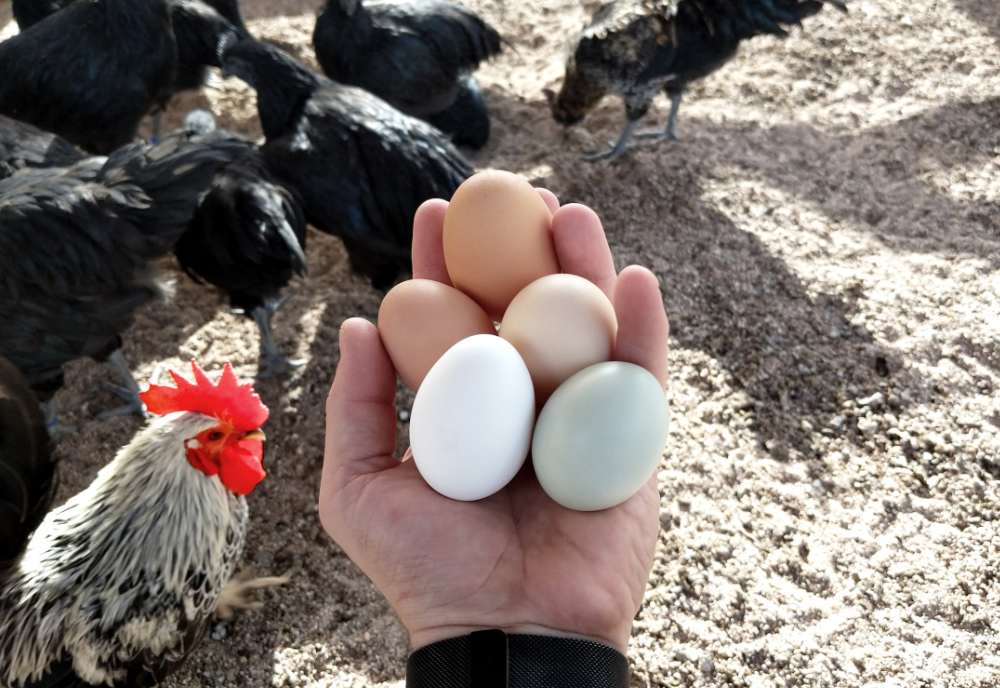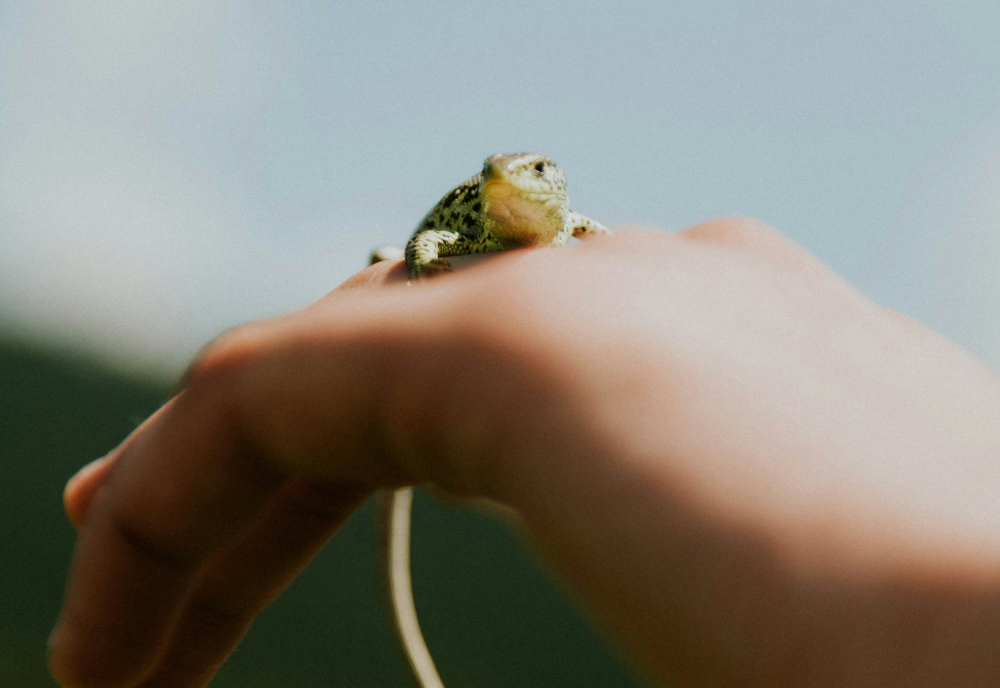If you have $6.50 and you want to buy 12 eggs, you could either spend it all on 12 free-range eggs, or $4.50 on caged eggs, saving yourself $2. If you’re concerned about making the more ethical purchase, which option should you choose?
I think a great majority of people would say the first, but I would say: “It depends what you do with the $2.” If you give $2 to a highly effective animal welfare organisation, research suggests you could very plausibly do thousands of times more good than the good that is done by buying 12 free-range instead of caged eggs. More people should take this approach to ethical consumption of animal foods.
Research into the effectiveness of charities has exploded in the last 15 years with the rise of Effective Altruism (EA), a movement that is all about using evidence and reason to figure out how people can do the most good, for humans and non-human animals. Consequently, there are opportunities to apply the approach I’m suggesting to a whole range of animal foods, not just eggs. (Here’s a list of some charities independent research suggests are highly effective at mitigating animal suffering.) But for the purposes of illustration, I’ll discuss egg purchase.
When discussing research into the cost-effectiveness of animal welfare charities, we must note that precise estimates are very difficult to make confidently. But I don’t think that matters. We shouldn’t require 100 per cent surety to act decisively. And here’s the most compelling point, as far as I see it: much of this research implies some interventions are so much more cost-effective than others, that, even if a study overestimates one-hundred fold the better intervention’s cost effectiveness, it will still be far more favourable compared with the worse.
For example, in 2019, EA researcher Saulius Šimčikas estimated the cost-effectiveness of all the world’s campaigns between 2005 and 2018 aimed at getting food companies to commit to using eggs produced only through cage-free systems. He concluded that for every dollar these campaigns raised, 12 to 160 years of chicken life would go from caged to cage free.
This is quite a staggering conclusion. To put it into perspective, suppose the average of 12 and 160 – 86 – is about right. That means, if we assume (as my quick Googling suggests we should) the average chicken lives for 7.5 years, then one dollar given to these campaigns should mean that 11-12 chickens will live cage free instead of caged for their whole lives. And we can double this if we give two dollars to these campaigns, as I’m suggesting we could if we saved that amount buying caged rather than free-range eggs. In total, then, $2 could convert about 63,000 days of chicken life from caged to cage free.
Compare this with what most ethically-minded egg consumers achieve with $2: 12 days. When one buys 12 free-range eggs, they are essentially freeing a hen from a cage for however long it takes her to lay 12 eggs, and they tend to lay about one per day. Funding a cage-free campaign might well, therefore, be 5,250 times more effective in terms of reducing suffering.
Importantly, Šimčikas says – and here’s an example of what I call the most compelling point – even with “very pessimistic assumptions”, the campaigns will probably impact five-and-a-half chicken years per dollar spent, or about 2,000 days of life. That’s most of one chicken’s life.
Let me pre-empt some scepticism. What if most people bought caged eggs to save money and then funded animal welfare organisations? Wouldn’t that just keep all hens in cages? Firstly, let’s cross that bridge if we get to it, which will probably be never. If you’re wondering how you can make the most ethical decision next time you buy eggs from the supermarket, I’m suggesting you have at least two options, and one is probably several orders of magnitude better than the other.
Secondly, this approach couldn’t become ubiquitous because, if we got to a stage at which most of the world’s egg buyers were willing to donate what they saved buying cheaper eggs, then the funds would re-route away from campaigns and directly to egg producers so that they could better afford free-range production. Again, in principle, all of this could apply to the purchase of other animal foods.
If you’re wondering how you can make the most ethical decision next time you buy eggs from the supermarket, I’m suggesting you have at least two options, and one is probably several orders of magnitude better than the other.
I started using this approach to buying animal foods when, for health reasons, I started eating them again. Consequently, I save time sourcing food and bypass the stress of figuring out precisely how my animal food purchases are produced.
This approach can even save you money. You can, for example, keep half of what you would normally spend on organic, free-range eggs and send the other half to a highly effective animal welfare organisation. You’d probably still do a great deal more good.
We also need not worry about matching the animal consumed to the animal aided. Wellbeing matters morally regardless of which creature possesses it, so you can morally offset buying a cheap pack of beef mince from the supermarket by using some of the savings to fund chicken welfare, or fish (or human, for that matter). This does not assume that all beings have equal capacity for suffering; it merely assumes some amount of suffering in one species is morally equivalent to some amount in another. Maybe a cow is three times as conscious – and therefore three times as impacted by suffering – as a chicken. It’s a plausible thought, and we don’t need to have perfect confidence in it. It’s a safe bet that all commonly farmed and slaughtered animals can experience a non-trivial degree of suffering.
You may think that attached to the purchase of some products are extra moral costs. Perhaps you think buying beef is not only morally costly because of the suffering it causes cows but because it creates more cows that produce more methane that accelerates global warming. That’s fine. You can just donate slightly more. Or, if you are intent on matching the cause areas of the moral cost of your purchase and moral benefit of your donation, you can send half to an animal welfare organisation and half to – what is according to rigorous, independent research – a highly effective climate change fund, like this one.
Some people might think this all sounds too finicky and time-consuming – keeping and tallying receipts and so on. But, firstly, it will likely be easier than figuring out the production methods of, and sourcing, humanely produced foods; secondly, you don’t even need to keep precise track of the amount you save and therefore owe. Maybe you’d guess that, with this approach, you’d typically save $15 per week on meat, eggs, milk, etc. You could then donate about $60 every month. You will have saved time and effort and done much more good.
I know this is counter-intuitive, but so is theoretical physics. Strangeness has nothing to do with a claim’s truth value. It should be no surprise that doing the right thing doesn’t often feel right. As we evolved, our survival chances were never bolstered by helping people or animals on the other side of the world. Doing so was impossible, so there was never any evolutionary pressure for us to develop emotional inclinations that would compel this behaviour, were it one day to become possible. That day has come. We should endeavour to, as EA co-founder Will MacAskill puts it, do good better.
If you wish to republish this original article, please attribute to Rationale. Click here to find out more about republishing under Creative Commons.
Photo by Daniel Tuttle on Unsplash.





How to use fuzzy logic and the trickle down effect to assuage one’s guilt at buying and eating unethically produced animal products.
Jacob Nazroo’s argument relies on (a) the premise that the pain and suffering of an individual doesn’t matter
and
(b) money saved by buying the cheaper unethical product, which is then donated to an animal welfare charity (or any other of your choosing) will eventually trickle down to the unethical producer who will voluntarily raise the standard of his animals’ welfare.
This then leads us to bridge to far, that even if we get to it “which will probably be never” we won’t need to cross.
Presumably on the other side of the bridge is an argument that goes like this: with the increased profit gained by selling their caged eggs (or feed lot beef etc.), producers will increase the number of chooks in cages (and crowd more animals into feed lots) which will increase production and therefore increase their profits and so on into the future.
All animals suffer, we are told. Some may suffer more than others but the consumer doesn’t have to have perfect confidence in where their donation goes because “wellbeing matters morally regardless of which creature possesses it.”
And in this case the possessor of the wellbeing is the individual consumer.
For as long as they continue to pay a tythe, the consumer need never be troubled by thoughts of animal cruelty as they crack their breakfast egg or slice into their veal cutlet. What’s more, with the ban on cameras being used in abattoirs, poultry farms and on live sheep transport, we never even know about it.
Such a comforting morality.
So…taking into account Nazoo’s argument that the pain and suffering of the individual matters less than the wellbeing of the whole, I am going to cease giving money to Free Julian Assange and instead donate it to a welfare society for journalists (cynicism intended.)
Hello Robyn,
Thanks for sharing your thoughts. I think you misunderstand some things.
1. My argument doesn’t assume the suffering of an individual doesn’t matter. It assumes that, all else considered equal, the suffering of X chickens is preferable to the equivalent suffering of more than X chickens and that if we can prevent either with the same resources we should prevent the suffering of more than X.
2. I’m also not saying producers of eggs will VOLUNTARILY begin more expensive but humane production. I’m assuming they’ll have economic incentive. The point is that, if we lived in a world like the one I imagine (which is extremely unlikely to come about, I think) then everyone would be willing to spend about $6.50Aud (but maybe more or less depending on the country in which they lived) on two things: (a) buying eggs and (b) ensuring hens have better laying conditions. Given BOTH of those goals, any rational consumer would revoke their funds toward (b), if they came to believe they weren’t achieving that goal. They would then, because they’re rational, try to fund (b) a different way. I would encourage them to repeat that process until they found the method with best bang for buck.
3. You claim that, with my approach, consumers wouldn’t have to concern themselves with animal cruelty. The whole point of the article is to encourage people to find better ways for consumers to use resources to mitigate animal suffering. This requires knowing how the suffering is being caused and what can be done about it. Research says cage-free campaigns are extremely effective. If evidence points a different way in future, we should reassess strategies.
4. And yes, I would strongly encourage you to donate money to a welfare society for journalists instead of freeing Julian Assange, if there was compelling evidence to think that such a society would be thousands of times more likely to create the positive effects that you think Julian Assange’s release would create. Forget the US, for the price it would take to free Assange, such a society would probably make Russia, China and North Korea paradises for journalists.
I’ve just been told that my figure of 7.5 years – the average lifespan of a chicken – doesn’t apply to most egg laying hens, who are typically slaughtered much earlier (at 1-3 years old). My mistake. But this doesn’t change anything important in my argument. If we assume both free range and cage hens are slaughtered at about the same age, then the amount by which using the approach I suggest is better than buying free range foods remains the same. Even if there is a discrepancy between the average at which free range and cage hens are slaughtered, the worst case scenario for the approach I suggest is that its impact halves, or perhaps quarters, which is still orders of magnitude better than spending all of one’s purchase funds on free range products.